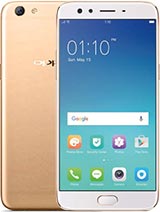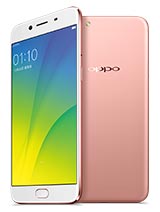Oppo F3 review: Selfielicious
Selfielicious

Final thoughts
In case you missed our recent Oppo F3 Plus review, the phablet left us with mostly positive feelings. Looking at the bigger picture, a good deal of Oppo's marketing has always had a camera-centric angle and the "Selfie Expert" is more than just a catchy phrase. That story goes all the way back to the rotating cameras in the Oppo N-series.

That being said, we counted on the 5.5-inch Oppo F3 to make an equally good impression and really drive the company's efforts home. Now, home is the keyword here. It's clear that the regular F3 is not as good as the Plus version - but it's more affordable and the dual selfie cam setup is intact. Oppo hopes that should be enough to make the phone a success in the intended markets of Southeast Asia.
Currently priced at around $300 and strategically positioned to undercut competitors like the Vivo V5 Plus, the Oppo F3 had to give up the Snapdragon chipset, VOOC fast charge and the 16MP main camera with 4K video of the Plus version. These are some serious downgrades but at the end of the day, they do save you some $150.
Oppo F3 key test findings
- Solid build quality, but design is a little played out and color options are limited. The finish feels good and doesn't pick fingerprints. Not as fancy as the F3 Plus unibody design but no obvious durability issues either.
- We like the always-on fingerprint sensor in the Home button. It is faster and more reliable than the one on the F3 Plus.
- The 5.5-inch display isn't particularly bright. Average contrast and sunlight legibility. Color accuracy is way off.
- The F3's 3,200mAh battery scored a 68h Endurance Rating, which is decent and meets expectations. Shame Oppo had to skip on VOOC fast charging support in the F3.
- The UI is heavily inspired by Apple's iOS, especially noticeable in some Oppo apps (calendar, gallery, etc.); plenty of duplicate apps preinstalled; The Settings structure is confusing and sub-optimal. ColorOS 3.0 is still based on Android Marshmallow, which is nearly two years old now.
- The Mediatek MT6750T performs poorly in both CPU and GPU tasks and is a big step down from the Snapdragon 653 inside the Oppo F3 Plus. You might get low framerates in graphic intensive games such as Asphalt 8, but most game titles would be fine.
- The single bottom-facing loudspeaker only scored an Average mark in our loudness test.
- Audio is loud and clear with an external amplifier but only decent over headphones.
- The main camera lacks the Dual Pixel technology, OIS and dual-tone flash, which were available on the F3 Plus. Photos are not particularly punchy in terms of colors, but we're quite happy with the image quality and it's quite adequate for the phone's price range.
- Selfies are rich in detail. The dual camera implementation is simple and straightforward. Results are pretty consistent between the two snappers.
- There is no 4K video capture like on the F3 Plus. 1080p videos are low in detail and yet look oversharpened.
Oppo has taken the F lineup quite far really. The original Oppo F1 came as a compact budget option, followed by the much more ambitious F1 Plus that scored big time at the domestic box office, despite costing $450. That's about the current price of the F3 Plus by the way, clearly an upper-tier entry, whereas the regular F3 is a midrange device. And one that sacrifices a lot to deliver the company's new dual selfie setup in a cheaper package. The price gap between the pair is sizeable at around $150.
The company's R series manages to fill that gap nicely and arguably offers even more bang for your buck, be it without the fancy camera tricks. There is the R9s, which costs about as much as the F3 Plus, while potentially offering a more universally appealing feature set. For one, there is an AMOLED panel adorning the otherwise similar body. You get the same 4GB of RAM and 64GB of storage, alongside an excellent 16MP main camera. And to top it all off, there's a highly power-efficient 14nm Snapdragon 625 capable of 4K video recording.
A different take on the dual selfie camera, the vivo V5 Plus brings selective focus (and autofocus in general), with no wide-angle selfies though. It comes with a similar 5.5-inch, FullHD, IPS panel, but employs a Snapdragon 625 chipset. In our books, that pretty much justifies the $50 premium over the Oppo F3.
If selfies is what matters, but you don't necessarily want two front cameras, you can also consider the Sony Xperia XA Ultra. Its 16MP, f/2.0, 1/2.6", OIS front camera, complete with autofocus and an LED flash can really do it for you. The newer XA1 Ultra offers an even better overall hardware package, but that is also reflected in the price tag - a good $120 more, or so over the F3.


Sony Xperia XA Ultra • Sony Xperia XA1 Ultra
Oppo and Vivo are far from the only players in Southeast Asia. Looking beyond the selfie-centric choices, there are plenty of value options by Meizu to explore. The MX6 is powered by a MediaTek Helio X20 chipset and currently sells for about as much as the Oppo F3. And you can save a few bucks by opting for the M5 Note.
Since we already went down this road, Xiaomi is a logical next stop. If you can cope with potential support and logistic hurdles, few can match the value of the Redmi Pro or, better yet, the widely popular Redmi Note 4.

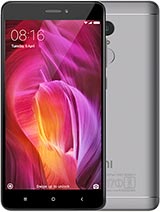
Xiaomi Redmi Pro • Xiaomi Redmi Note 4
As for options that are easier to come by in the western hemisphere, the Samsung Galaxy J7 (2016) comes with a 5.5-inch screen of 720p resolution. That's not as sharp, but it has the advantage of Super AMOLED on its side. Just be sure to look for the battery efficient Exynos 7870 model.
Lenovo has the similarly specked P2 on offer. It's well within the $300 mark and brings good value with a Snapdragon 625 chipset and a 5.5-inch, FullHD AMOLED screen. The Huawei Honor 6X, the Nokia 6 and the Lenovo K6 Note are some of the other options worth checking.

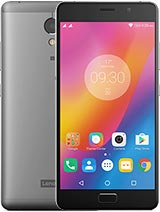
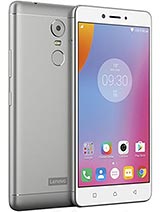
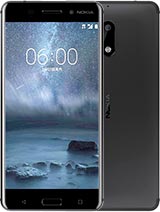
Samsung Galaxy J7 (2016) • Lenovo P2 • Lenovo K6 Note • Nokia 6
All things considered, the Oppo F3 is less likely to inspire than its Plus sibling. But this doesn't mean it's incapable of making a similar if not bigger splash. A good $150 cheaper, it may find it easier to connect to its target audience, in intended markets. No fast charging, a feeble chipset, no 4K video - the Oppo F3 simply does not deliver above its pay grade. You will find options that do if you look hard enough. And if you go for the Oppo F3 you'll get exactly what it says on the box. A selfie expert, not a Jack of all trades.
Reader comments
- eiyam
- 20 Jan 2023
- 2Ap
Been using this since June 2017 and still working fine but some of the apps cannot be install since its not updated anymore. I drop this already many times even drop in the toilet bowl (clean of course lol).
- Vishakha
- 18 Oct 2022
- 7k9
I'm using this phone since Oct 2017 and it is still working but only the problem is battery n the speed and also some apps are not supporting now ....but often dropping the phone the display is very durable, no scratches no broken glass ...nothi...
- Anonymous
- 01 Jun 2020
- UNA
I would like to ask if you have broke oppo f3 phone or a display IC for oppo f3 phone. Thank you
